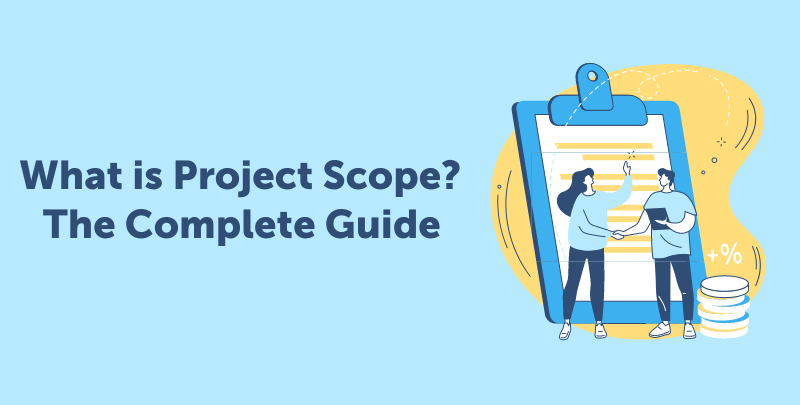Get all our templates, tips, and fresh content so you can run effective, profitable, low-stress projects in your agency or team.
They say that the person who says it will take the longest and cost the most is the only person who knows how to do the job.
When embarking on a project, stakeholders tend to be unrealistically optimistic about its duration and cost. After all, we all want to be as successful as possible with the least investment possible! The problem is that almost all projects encounter setbacks and failures along the way, resulting in longer projects and higher costs.
In this blog, I’ll explain what you can do to secure the success of your projects, namely, how to create a project management plan.
What is a project management plan?
Project management plan definition: A project management plan stems from the original project plan and is a blueprint for your project, containing all the vital information you need to bring it to fruition. It includes information about project deliverables, goals, budget, timeline, project management communication plan, and resources and is shared with all relevant stakeholders. A project management plan is a reference throughout the project, keeping you on track and everyone on the same page.
Why is a project management plan important?
While small projects might survive if you just ‘wing it,’ planning and solving problems as you go along is rarely the case for average to large projects. In fact, according to PMI, studies have proven that having a project plan significantly improves project success.
So, how does a project management plan help?
- Identifies issues at the outset: Because a project management plan demands that you write things down and share them with stakeholders, many issues that could have derailed the project can be identified before any harm is done. For example, if you were imagining a deliverable one way but your client was imagining something else, this will come to light as you create the project management plan.
- Serves as a reference point: A project management plan anchors the project in that it can be referred to throughout the project and shows whether you are meeting your original goals.
- Keeps clients happy: Clients (rightfully) love knowing exactly what to expect from a project, and a project management plan gives them all the information they need to feel secure that their project is in the right hands.
- Provides clarity: So much time and money can be wasted when people don’t know what they’re doing. You can have two employees doing the same task because neither is clear about what is expected of them. Or you can have no one doing a particular task because it wasn’t clearly assigned to anyone. You can also easily miss milestones and deadlines when it’s unclear when various things are due. A project management plan effectively eliminates excuses for mishaps - it’s all clearly laid down in ink and available to everyone involved in the project.
Project management plan components:
- Executive Summary: An executive summary is like an outline for a project management plan. It should explain in a nutshell how you plan to solve your client’s problem or provide them with the deliverables they are requesting.
- Deliverables: This needs to be discussed with stakeholders beforehand. Once you have agreed upon the deliverables and their contents, you can write them in the project management plan.
- Milestones and goals: Milestones are points of considerable achievement in the project duration, and goals are what you are trying to achieve overall in the project, e.g., drive more traffic to a website.
- Timeline: A visual guide depicting when milestones and deliverables need to be achieved by.
- Resource Management Plan: How many team members will you need for the project, and what materials will you require?
- Communication Plan: How should team members and stakeholders communicate with each other, and how often? Get this all down clearly in the project management plan.
- Change Management Project Plan: How do you react when a client asks for a change in scope or timeline? A change management plan (similar to a project scope management plan) preempts these problems and helps you deal with them effectively.
- Project Risk Management Plan: It’s always good to have a contingency plan in project management to preempt potential risks.
Check out Master of Project Academy for a real-life project management plan example.
Project management plan best practices
Include stakeholders: Including stakeholders at this stage will ensure their support of your plan throughout the project. It also sets the tone for the collaborative atmosphere you are aiming for.
Use an attractive project management plan template: Don’t make your project management plan very text-heavy for your team's sake. Instead, use color and icons to make reading easy and enjoyable. Your stakeholders will also appreciate it being concise and easy on the eye.
Learn from previous projects: Save yourself time and heartache by learning from previous projects! You can gauge things like time and cost from past experience. You can also get team members and stakeholders to weigh in on their previous experiences to get the most accurate idea possible of how to plan your project.
How can Workamajig help you with your project management plan?
Workamajig is project management software built specifically for creative teams. It has all the tools you need to build a robust project management plan and manage your project.
Workamajig provides you with state-of-the-art tools to ease your load and streamline projects. Find out about our:
Find out how you can join thousands of happy Workamajig users today!
Related Posts


